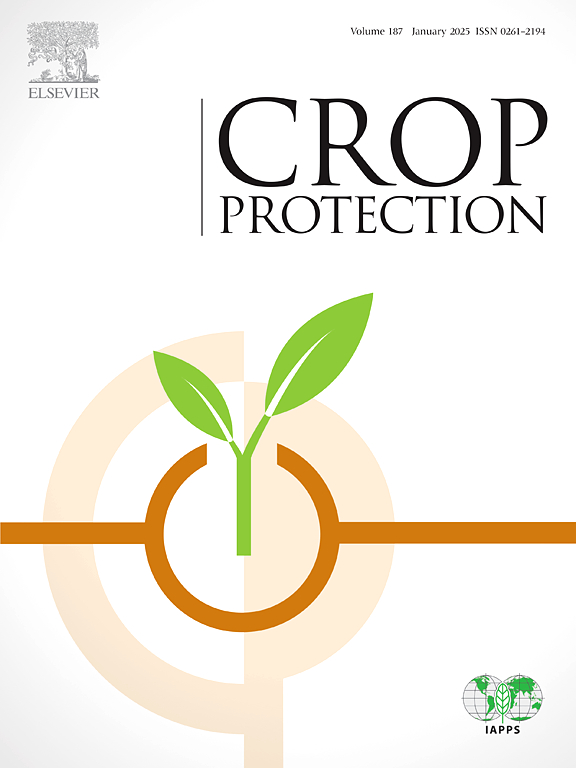Intergenerational effect of cyproflanilide at sublethal level to Chilo suppressalis (Walker) (Lepidoptera: Pyralidae)
IF 2.5
2区 农林科学
Q1 AGRONOMY
引用次数: 0
Abstract
Rice stem borer (RSB) Chilo suppressalis Walker, is a globally voracious pest of the rice crop and has resistance against various insecticides. It is exciting that the novel meta-diamide insecticide cyproflanilide has demonstrated high efficacy against RSB. Therefore, the intergenerational sublethal effects on the parental (F0) and the subsequent offspring (F1) generation were further explored by using the age-stage TWOSEX-MS Chart program in this study. The bioassay results showed the LC50, LC30, and LC10 of 0.046 mg/kg, 0.035 mg/kg, and 0.024 mg/kg, respectively after 96 h. For the biological parameters, the larval duration was prolonged by 1.84 d and 1.43 d in the LC30 groups of the F0 and F1, respectively, while the mean female pupal weight, pupation rate, and emergence rate were significantly decreased in both generations. The mean fecundity was reduced by 20.5 and 10.96 eggs/female in the LC30 groups of the F0 and F1, respectively. Meanwhile, a non-significant difference was observed in the population parameters, but the mean generation time (T) significantly increased by 1.21 d for the LC30 group in the F1 generation. The relative fitness (Rf) costs were 0.64 for LC10 and 0.70 for LC30 in the F0 generation, while 0.85 for LC10 and 0.76 for LC30 in the F1 generation. These findings highlight the potential of sublethal concentrations (LC10 and LC30) of cyproflanilide to alter key biological and population parameters of RSB, providing valuable insights for its integrated pest management program (IPM) in the field.

求助全文
约1分钟内获得全文
求助全文
来源期刊

Crop Protection
农林科学-农艺学
CiteScore
6.10
自引率
3.60%
发文量
200
审稿时长
29 days
期刊介绍:
The Editors of Crop Protection especially welcome papers describing an interdisciplinary approach showing how different control strategies can be integrated into practical pest management programs, covering high and low input agricultural systems worldwide. Crop Protection particularly emphasizes the practical aspects of control in the field and for protected crops, and includes work which may lead in the near future to more effective control. The journal does not duplicate the many existing excellent biological science journals, which deal mainly with the more fundamental aspects of plant pathology, applied zoology and weed science. Crop Protection covers all practical aspects of pest, disease and weed control, including the following topics:
-Abiotic damage-
Agronomic control methods-
Assessment of pest and disease damage-
Molecular methods for the detection and assessment of pests and diseases-
Biological control-
Biorational pesticides-
Control of animal pests of world crops-
Control of diseases of crop plants caused by microorganisms-
Control of weeds and integrated management-
Economic considerations-
Effects of plant growth regulators-
Environmental benefits of reduced pesticide use-
Environmental effects of pesticides-
Epidemiology of pests and diseases in relation to control-
GM Crops, and genetic engineering applications-
Importance and control of postharvest crop losses-
Integrated control-
Interrelationships and compatibility among different control strategies-
Invasive species as they relate to implications for crop protection-
Pesticide application methods-
Pest management-
Phytobiomes for pest and disease control-
Resistance management-
Sampling and monitoring schemes for diseases, nematodes, pests and weeds.
 求助内容:
求助内容: 应助结果提醒方式:
应助结果提醒方式:


